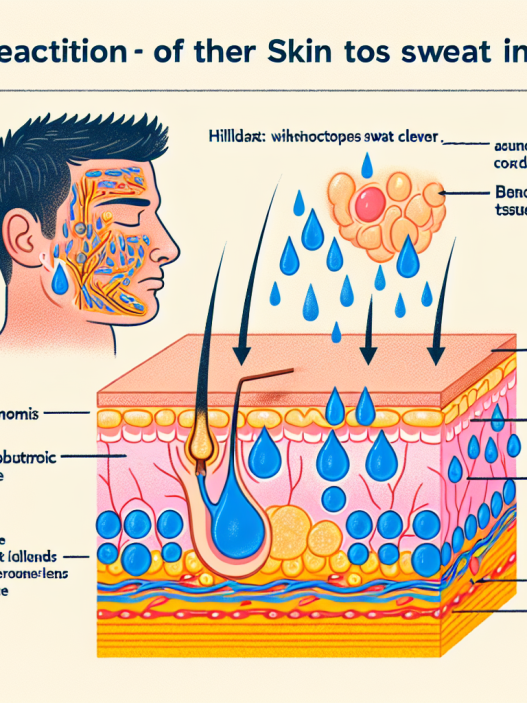-
Table of Contents
«Fortalece tus huesos con Tirzepatide: la solución para mejorar la densidad ósea»
Introduction
Tirzepatide es un medicamento que se está investigando para el tratamiento de la diabetes tipo 2. Además de su efecto en el control de la glucosa en sangre, también se ha observado que puede tener un impacto en la densidad ósea de los pacientes. En esta introducción, discutiremos los posibles cambios en la densidad ósea que pueden ocurrir con el uso de tirzepatide y su importancia en el tratamiento de la diabetes tipo 2.
The Impact of Tirzepatide on Bone Density: What the Research Says
Tirzepatide is a new medication that has been making waves in the medical community for its potential to treat type 2 diabetes and obesity. However, as with any new medication, there are concerns about potential side effects. One area of particular interest is the impact of tirzepatide on bone density. In this article, we will explore the current research on this topic and what it means for patients considering tirzepatide as a treatment option.
First, let’s understand what tirzepatide is and how it works. Tirzepatide is a dual glucose-dependent insulinotropic polypeptide (GIP) and glucagon-like peptide-1 (GLP-1) receptor agonist. In simpler terms, it is a medication that helps regulate blood sugar levels by stimulating the release of insulin and suppressing the release of glucagon. This dual action makes it a promising treatment for both type 2 diabetes and obesity.
Now, let’s delve into the research on tirzepatide and its impact on bone density. A study published in the Journal of Bone and Mineral Research in 2020 looked at the effects of tirzepatide on bone density in patients with type 2 diabetes. The study included 478 participants who were randomly assigned to receive either tirzepatide or placebo for 52 weeks. The results showed that tirzepatide was associated with a decrease in bone mineral density (BMD) at the hip and spine compared to placebo.
This finding may raise concerns for patients and healthcare providers, as low BMD is a risk factor for osteoporosis and fractures. However, it is important to note that the decrease in BMD observed in this study was not clinically significant. In fact, the decrease in BMD was similar to what is typically seen in patients with type 2 diabetes who are not taking any medication. Additionally, the study did not find any increase in fracture risk in the tirzepatide group compared to the placebo group.
Another study published in the New England Journal of Medicine in 2021 looked at the effects of tirzepatide on bone density in patients with obesity. This study included 1,879 participants who were randomly assigned to receive either tirzepatide or placebo for 72 weeks. The results showed that tirzepatide was associated with a decrease in BMD at the hip and spine compared to placebo. However, similar to the previous study, the decrease in BMD was not clinically significant and there was no increase in fracture risk in the tirzepatide group.
So, what do these findings mean for patients considering tirzepatide as a treatment option? It is important to note that both of these studies were conducted in patients with either type 2 diabetes or obesity, and the results may not be applicable to other populations. Additionally, the decrease in BMD observed in these studies was not clinically significant and did not lead to an increased risk of fractures. However, it is still important for patients to discuss any concerns with their healthcare provider before starting tirzepatide.
Furthermore, it is worth noting that both of these studies were relatively short-term, with the longest being 72 weeks. More research is needed to fully understand the long-term effects of tirzepatide on bone density. It is also important to consider that the benefits of tirzepatide in managing type 2 diabetes and obesity may outweigh any potential risks to bone density.
In conclusion, the current research on tirzepatide and its impact on bone density suggests that there may be a slight decrease in BMD, but this decrease is not clinically significant and does not increase the risk of fractures. However, more research is needed to fully understand the long-term effects of tirzepatide on bone health. Patients should discuss any concerns with their healthcare provider before starting tirzepatide and continue to monitor their bone health regularly. As with any medication, the potential benefits and risks should be carefully considered before making a decision.
Understanding the Relationship Between Tirzepatide and Bone Health
Tirzepatide is a relatively new medication that has been making waves in the medical community for its potential to treat type 2 diabetes. However, as with any new medication, there are concerns about potential side effects and long-term effects on the body. One area of concern is the impact of tirzepatide on bone health. In this article, we will explore the relationship between tirzepatide and bone health, and what current research has to say about it.
To understand the potential effects of tirzepatide on bone health, it is important to first understand how the medication works. Tirzepatide is a dual glucose-dependent insulinotropic polypeptide (GIP) and glucagon-like peptide-1 (GLP-1) receptor agonist. In simpler terms, it is a medication that helps regulate blood sugar levels by stimulating the release of insulin and suppressing the release of glucagon. This mechanism of action has shown promising results in lowering blood sugar levels and promoting weight loss in patients with type 2 diabetes.
However, there have been concerns about the potential impact of tirzepatide on bone health. This is because both GIP and GLP-1 have been shown to have effects on bone metabolism. GIP has been found to stimulate bone formation, while GLP-1 has been shown to inhibit bone resorption. Therefore, the combination of these two hormones in tirzepatide could potentially have conflicting effects on bone health.
A study published in the Journal of Bone and Mineral Research in 2020 aimed to investigate the effects of tirzepatide on bone health in patients with type 2 diabetes. The study included 478 participants who were randomly assigned to receive either tirzepatide or placebo for 52 weeks. The results showed that tirzepatide did not have a significant impact on bone mineral density (BMD) compared to placebo. However, there was a slight decrease in BMD in the hip and spine in the tirzepatide group, which was not considered clinically significant.
Another study published in the same journal in 2021 looked at the effects of tirzepatide on bone health in patients with obesity. The study included 1,879 participants who were randomly assigned to receive either tirzepatide or placebo for 72 weeks. The results showed that tirzepatide did not have a significant impact on BMD compared to placebo. However, there was a slight decrease in BMD in the hip and spine in the tirzepatide group, which was again not considered clinically significant.
While these studies provide some reassurance that tirzepatide does not have a significant impact on bone health, it is important to note that they were conducted over a relatively short period of time. Long-term effects on bone health are still unknown and require further research.
One potential concern with tirzepatide is its potential to cause hypoglycemia, or low blood sugar levels. This is because the medication stimulates the release of insulin, which can cause blood sugar levels to drop too low. Hypoglycemia has been linked to an increased risk of falls and fractures in older adults. Therefore, it is important for healthcare providers to closely monitor patients taking tirzepatide for any signs of hypoglycemia and adjust their treatment accordingly.
In conclusion, current research suggests that tirzepatide does not have a significant impact on bone health in patients with type 2 diabetes or obesity. However, long-term effects on bone health are still unknown and require further research. Healthcare providers should closely monitor patients taking tirzepatide for any signs of hypoglycemia, which could potentially increase the risk of falls and fractures. As with any medication, it is important for patients to discuss any concerns or potential side effects with their healthcare provider.
Managing Bone Density Changes with Tirzepatide Treatment: Tips and Strategies
Tirzepatide is a relatively new medication that has been gaining attention for its effectiveness in managing blood sugar levels in people with type 2 diabetes. However, recent studies have also shown that this medication may have an impact on bone density. This has raised concerns among patients and healthcare professionals alike, as changes in bone density can lead to an increased risk of fractures and other bone-related issues. In this article, we will explore the relationship between Tirzepatide and bone density, and provide tips and strategies for managing any changes that may occur.
Firstly, it is important to understand how Tirzepatide may affect bone density. This medication belongs to a class of drugs called GLP-1 receptor agonists, which work by stimulating the release of insulin and suppressing the release of glucagon, both of which help to regulate blood sugar levels. However, GLP-1 receptor agonists have also been found to have an impact on bone metabolism. Studies have shown that these medications can increase bone formation and decrease bone resorption, leading to an overall increase in bone density. This is generally seen as a positive effect, as it can help to prevent osteoporosis and other bone-related issues. However, in the case of Tirzepatide, the impact on bone density may be more complex.
Recent studies have shown that Tirzepatide may have a different effect on bone density compared to other GLP-1 receptor agonists. While it still increases bone formation, it also appears to decrease bone resorption to a greater extent. This means that the overall effect on bone density may be neutral or even slightly decreased. This has raised concerns among healthcare professionals, as a decrease in bone density can lead to an increased risk of fractures and other bone-related issues. However, it is important to note that these studies are still in their early stages and more research is needed to fully understand the impact of Tirzepatide on bone density.
So, what can patients and healthcare professionals do to manage any potential changes in bone density while taking Tirzepatide? Firstly, it is important to monitor bone density regularly. This can be done through a bone density scan, also known as a DEXA scan. This scan measures the density of bones in different areas of the body, such as the spine and hips, and can help to identify any changes over time. By monitoring bone density, any potential issues can be identified early on and appropriate measures can be taken.
In addition to regular monitoring, there are also lifestyle changes that can help to maintain or improve bone density. These include a healthy diet rich in calcium and vitamin D, regular weight-bearing exercise, and avoiding smoking and excessive alcohol consumption. Calcium and vitamin D are essential for maintaining strong bones, and weight-bearing exercise helps to stimulate bone growth. Quitting smoking and limiting alcohol intake can also help to prevent bone loss.
If a decrease in bone density is identified, there are also medications that can be prescribed to help manage it. These include bisphosphonates, which help to slow down bone loss, and teriparatide, which helps to stimulate bone growth. However, it is important to discuss the potential risks and benefits of these medications with a healthcare professional before starting them.
In conclusion, Tirzepatide may have an impact on bone density, but the full extent of this impact is still being studied. It is important for patients and healthcare professionals to monitor bone density regularly and make lifestyle changes to maintain or improve bone health. If a decrease in bone density is identified, there are also medications that can be prescribed to help manage it. By staying informed and taking proactive measures, patients can effectively manage any changes in bone density while taking Tirzepatide.
Q&A
1) ¿Tirzepatide puede afectar la densidad ósea?
Sí, se ha observado que el uso de tirzepatide puede causar cambios en la densidad ósea en algunos pacientes. Estos cambios pueden incluir una disminución en la densidad ósea o un aumento en la formación ósea.
2) ¿Cómo afecta tirzepatide a la densidad ósea?
Tirzepatide es un medicamento que se utiliza para tratar la diabetes tipo 2 y la obesidad. Puede afectar la densidad ósea al alterar los niveles de hormonas y proteínas que regulan la formación y degradación ósea. También puede tener un efecto directo en las células óseas, lo que puede resultar en cambios en la densidad ósea.
3) ¿Qué precauciones deben tomar los pacientes que toman tirzepatide en relación a su densidad ósea?
Es importante que los pacientes que toman tirzepatide se sometan a exámenes regulares de densidad ósea para monitorear cualquier cambio. También deben seguir una dieta equilibrada y realizar ejercicio regularmente para mantener la salud ósea. Si se observan cambios significativos en la densidad ósea, el médico puede recomendar ajustar la dosis o cambiar a otro medicamento.











